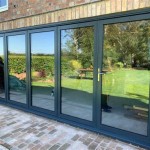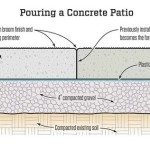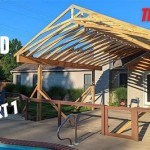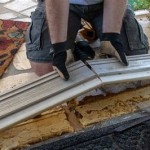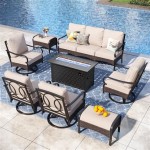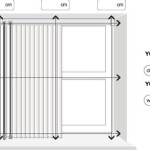Alternatives To Paving A Patio: Creating Beautiful and Functional Outdoor Spaces
Patios serve as extensions of indoor living spaces, offering areas for relaxation, entertainment, and dining. While traditional paving materials like concrete, brick, and stone remain popular choices, their installation can be costly, labor-intensive, and environmentally impactful. Exploring alternative patio surfaces presents options that are often more affordable, sustainable, and aesthetically diverse, allowing homeowners to create unique and functional outdoor spaces tailored to their specific needs and preferences. This article delves into several viable alternatives to paved patios, examining their advantages and disadvantages to assist in informed decision-making.
Gravel and Crushed Stone Patios: Affordability and Permeability
Gravel and crushed stone patios represent a cost-effective and readily available alternative to traditional paving. The installation process is relatively straightforward, requiring excavation, a weed barrier, and the spreading and compacting of the chosen material. The inherent permeability of gravel and crushed stone allows for efficient water drainage, mitigating the risk of standing water and potential erosion. This permeability also contributes to reduced stormwater runoff, benefiting the surrounding environment.
Several types of gravel and crushed stone are suitable for patio construction, each offering a distinct aesthetic and functional profile. Pea gravel, characterized by its smooth, rounded stones, provides a comfortable walking surface but can shift underfoot. Crushed granite, with its angular edges, offers increased stability and traction. Decomposed granite, a finer material, compacts well and creates a relatively smooth surface, but requires regular maintenance to prevent erosion. The choice of material depends on the desired aesthetic, intended use, and level of maintenance the homeowner is willing to undertake.
Despite the advantages, gravel and crushed stone patios are not without their drawbacks. The material can shift and spread over time, requiring periodic raking and replenishment. Weeds can grow through the gravel, necessitating the application of herbicides or manual weeding. Furthermore, mobility can be challenging for individuals with disabilities or those using wheelchairs or walkers. Careful consideration of these factors is essential before opting for gravel or crushed stone as a patio surface.
Mulch and Wood Chip Patios: A Natural and Sustainable Option
Mulch and wood chips offer a natural and sustainable alternative to paved patios, particularly well-suited for informal or woodland settings. These materials are typically derived from recycled wood products, making them an environmentally friendly choice. Mulch and wood chips provide a soft and comfortable walking surface, ideal for relaxation and play areas.
The installation process involves removing the topsoil, laying down a weed barrier fabric, and spreading the mulch or wood chips to a desired depth. The initial cost is generally lower than that of paving, but regular replenishment is required as the material decomposes over time. The decomposition process releases nutrients into the soil, which can benefit surrounding plants.
However, mulch and wood chip patios are susceptible to decomposition and weed growth. Moisture retention can also lead to fungal growth, which may be undesirable. The surface can become slippery when wet, posing a potential safety hazard. Additionally, mulch and wood chips may attract insects. Proper drainage and regular maintenance are crucial to maintaining the integrity and appearance of the patio.
Decking: Elevating the Outdoor Experience
Decking provides a raised platform that can transform an outdoor space, offering a distinct aesthetic and functional appeal. Decks are typically constructed from wood or composite materials and can be designed to accommodate various layouts and features, such as built-in seating, planters, and pergolas. The elevated surface offers improved drainage and ventilation, minimizing the risk of moisture damage.
Wood decking, crafted from species like cedar, redwood, or pressure-treated pine, offers a natural beauty and warmth. However, wood requires regular maintenance, including staining or sealing, to protect it from the elements and prevent rot. Composite decking, made from a blend of wood fibers and plastic, offers increased durability and resistance to weathering and decay. Composite decking requires less maintenance than wood but typically carries a higher initial cost.
The construction of a deck involves more complex structural considerations than other patio alternatives. Proper footings, framing, and railing systems are essential to ensure the deck's stability and safety. Building codes and regulations often apply to deck construction, necessitating permits and inspections. While decking offers numerous advantages, the increased complexity and cost should be carefully evaluated.
Paver Alternatives: Exploring New Materials
Beyond traditional paving materials, a range of innovative paver alternatives are available, offering unique aesthetics and functional properties. Permeable pavers, for instance, allow water to drain through the surface, reducing stormwater runoff and replenishing groundwater. These pavers are typically made from concrete or recycled materials and are designed with interlocking spaces that facilitate drainage.
Rubber pavers, crafted from recycled tires, offer a resilient and slip-resistant surface, ideal for play areas or areas prone to moisture. Rubber pavers absorb impact and provide a comfortable walking surface. Plastic pavers, made from recycled plastic, are lightweight, durable, and resistant to weathering. They are available in a variety of colors and styles and can be easily installed.
These alternatives, while potentially more environmentally friendly or functionally advantageous, require similar groundwork to traditional pavers. The initial excavation, leveling, and base preparation will still be factors in overall cost and labor. Homeowners should investigate the specific installation requirements and longevity expectations of these innovative materials before committing.
Patio Stones and Flagstone: Natural Beauty and Durability
Patio stones and flagstone offer a natural and aesthetically pleasing alternative to traditional paving. These materials, typically sourced from local quarries, exhibit unique variations in color, texture, and shape, adding character and individuality to the patio surface. Patio stones and flagstone are durable and weather-resistant, capable of withstanding harsh climates and heavy foot traffic.
The installation process involves laying the stones or flagstone on a bed of compacted gravel or sand, with joints filled with polymeric sand or mortar. The irregular shapes of the stones require careful planning and cutting to create a cohesive and visually appealing pattern. Grouting between stones can be time-consuming. The natural beauty and durability of patio stones and flagstone make them a desirable choice for creating a timeless and elegant outdoor space.
However, the irregular surfaces of patio stones and flagstone can pose challenges for mobility, particularly for individuals with disabilities. The stones can become slippery when wet, requiring the application of slip-resistant sealants. The cost of patio stones and flagstone can vary depending on the type and availability of the material. Consider the long-term impact of quarrying practices when making a material selection.
Grass Patios: A Verdant and Sustainable Option
Grass patios, also known as "living patios," offer a verdant and sustainable alternative to paved surfaces. Grass patios create a seamless transition between the lawn and the patio area, blending seamlessly with the surrounding landscape. The permeable surface allows for efficient water drainage, reducing stormwater runoff and promoting healthy soil conditions.
The construction of a grass patio involves creating a level surface, installing a drainage system, and planting grass or sod. The type of grass selected should be suitable for the climate and level of foot traffic expected. Regular mowing, watering, and fertilization are essential to maintain the health and appearance of the grass. The integration of stepping stones or pavers can provide designated pathways within the grass patio.
Grass patios require consistent maintenance and are susceptible to wear and tear from heavy use. Shaded areas may struggle to support healthy grass growth. Weed control can be challenging, requiring the application of herbicides or manual weeding. While grass patios offer a unique aesthetic and environmental benefits, their suitability depends on the homeowner's willingness to commit to ongoing maintenance.
Combining Materials: Creating Unique and Functional Spaces
The combination of different patio materials can create visually appealing and functionally diverse outdoor spaces. Integrating gravel pathways with patio stone seating areas, for instance, can add texture and visual interest. Mixing wood decking with gravel or mulch can create a tiered effect, defining different zones within the patio area. The possibilities are limited only by imagination and budget.
By strategically combining materials, homeowners can tailor the patio to their specific needs and preferences. A patio designed for entertaining could incorporate a large paved area for dining and a smaller gravel area for a fire pit. A patio designed for relaxation could feature a wood deck with built-in seating surrounded by lush landscaping.
When combining materials, careful consideration should be given to the transitions between different surfaces. Ensuring smooth and safe transitions is essential for accessibility and preventing tripping hazards. The aesthetic compatibility of the chosen materials should also be considered to create a cohesive and harmonious design.
Artificial Turf: A Low-Maintenance Alternative
Artificial turf provides a low-maintenance alternative to natural grass for patio surfaces. Modern artificial turf products closely resemble natural grass in appearance and feel, offering a realistic and aesthetically pleasing surface. Artificial turf requires no mowing, watering, or fertilization, making it an ideal option for individuals seeking a low-maintenance outdoor space.
The installation process involves preparing a level base, installing a drainage system, and securing the artificial turf. The turf is typically made from synthetic fibers and is designed to withstand heavy foot traffic and inclement weather. Artificial turf is permeable, allowing water to drain through the surface, preventing standing water.
While artificial turf offers numerous advantages, it requires initial investment. The surface can become hot in direct sunlight, requiring the use of shade structures or water spray to cool it down. Artificial turf does not provide the same environmental benefits as natural grass, such as carbon sequestration and oxygen production. Consider the environmental implications and potential heat retention before opting for artificial turf as a patio surface.

Compelling Alternatives To Paving A Patio Truegrid Pavers

Compelling Alternatives To Paving A Patio Truegrid Pavers

Alternatives To Paving Gardens Bbc Gardeners World Magazine

10 Great Alternatives To Garden Patio Paving Buckinghamshire Landscape Gardeners

Easy Paving Systems 5 Options For Quick Installation Truegrid Pavers
7 Patio Alternatives To Paving Slabs For Residential Commercial Properties

Patio Alternatives And Options Have You Considered Resin Bound

Budget And Eco Friendly Concrete Alternatives Single Girl S Diy

Paving Ideas For Patios Paths And Driveways

Budget And Eco Friendly Concrete Alternatives Single Girl S Diy

